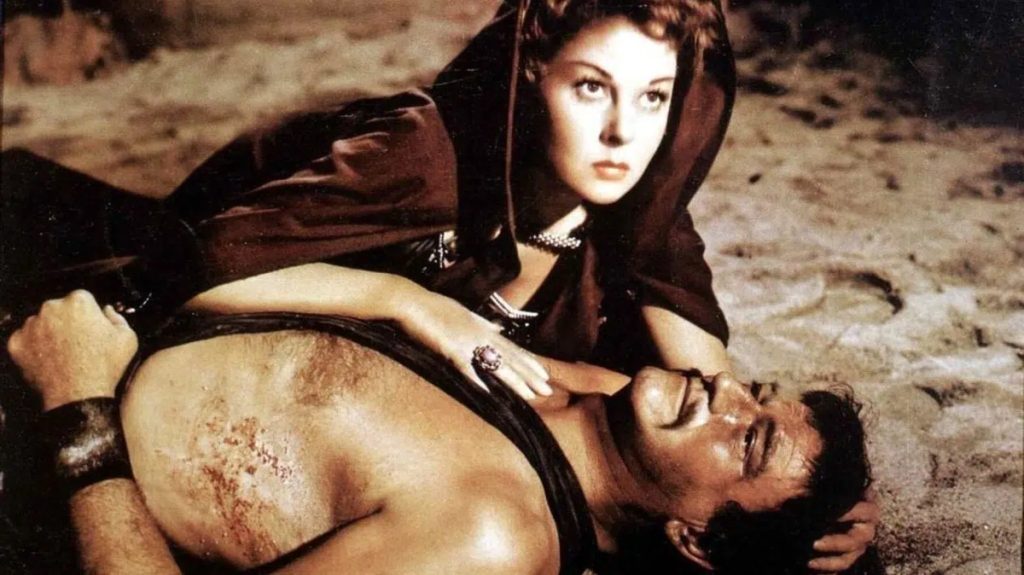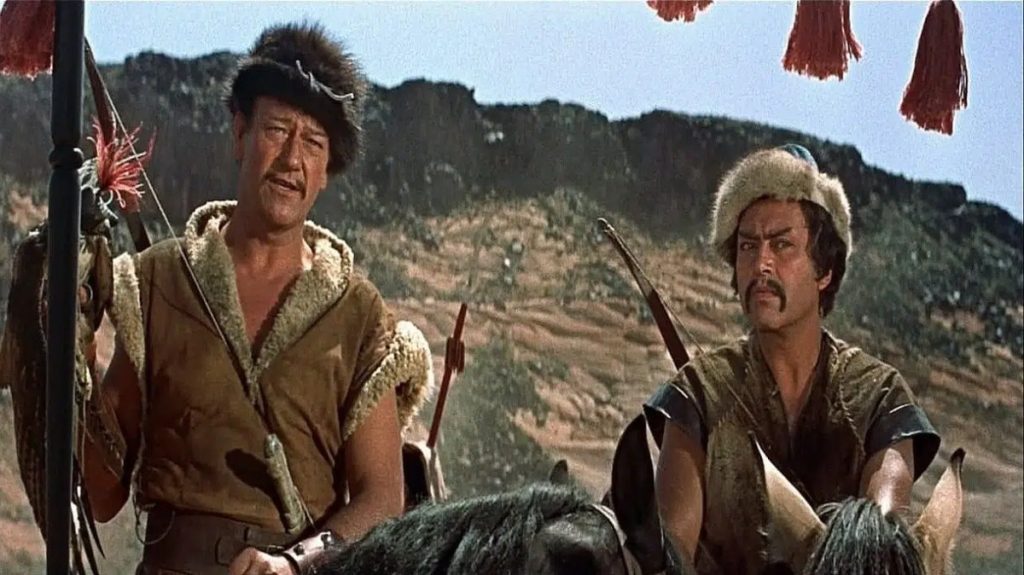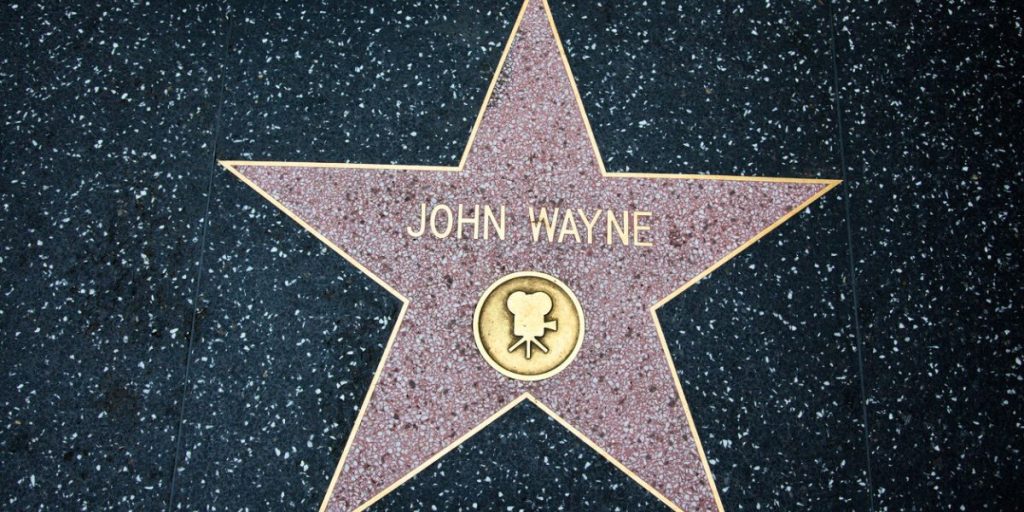Shooting a flop is always a bit embarrassing. But when you’re John Wayne, is it really such a big deal? What did he have to fear by signing on for The Conqueror—aside from slightly tarnishing his tough-guy image or inviting a few snarky comments that would quickly be forgotten? However, when said flop leads to the deaths of dozens of people, well… things take a much darker turn.
This is often called the worst casting decision in the history of cinema—no exaggeration. John Wayne as Genghis Khan in The Conqueror has long held this infamous title, outshining some other questionable contenders (hello, Colin Farrell in Alexander, Dustin Hoffman as Tom Cruise’s sibling…). Let’s be real: slapping on a cheap mustache and trying to play a youthful Genghis Khan at nearly 50 years old wasn’t going to convince anyone.
And while the film just about scraped by at the box office, the critics were merciless. Yet, that’s not the reason this movie went down in history in the worst way imaginable. No, bad taste wasn’t the only casualty of this doomed project…

A Cheap, Quiet Filming Location… Or So They Thought
Ever wondered about the youthful love life of Genghis Khan? Probably not. But eccentric billionaire Howard Hughes did. Yes, the same Howard Hughes famously portrayed by Leonardo DiCaprio in The Aviator. In the mid-1950s, he decided to produce a film about it, handing directorial duties to second-tier actor Dick Powell—almost a rookie behind the camera—with a script written by British screenwriter Oscar Millard.
If you’re expecting historical accuracy, abandon all hope here. The real aim was to lure audiences with vibrant Technicolor scenes featuring Hollywood icons John Wayne and Susan Hayward. For RKO Pictures, which Hughes had owned since 1948, this film was supposed to be a financial lifeline, as the company was teetering on the brink. In fact, RKO would be sold off before The Conqueror even hit theaters—and soon after, it was shut down completely.
Still, Hughes was determined to make it work and put serious money on the table: a jaw-dropping $6 million budget. To give some perspective, that same year—1954—Hitchcock’s Rear Window and Kazan’s On the Waterfront were made for a fraction of that cost.
Hughes used that hefty budget to secure John Wayne, who was apparently all in after reportedly pulling the script out of the trash—literally—after it had been rejected.

A Deadly Desert: When the Filming Location Turns Toxic
So, where did this grandiose, slightly bizarre project set up shop? Hughes wanted a cost-effective, convenient location. Enter the Utah desert, specifically near St. George—a seemingly perfect spot with vast, arid landscapes ready to mimic the Mongolian steppes. What no one seemed to mind at the time, however, was that this same area was just downwind from the Nevada Test Site, where the US government had conducted atomic bomb tests throughout the early 1950s.
Yes, you read that right: a radioactive desert as a film set.
According to reports, 100 above-ground nuclear detonations had occurred in the years leading up to the shoot. But back then, concerns about radiation exposure weren’t exactly headline news, and warnings from scientists were often brushed aside. For the cast and crew of The Conqueror, it was business as usual—dust storms swirling, cameras rolling, and no one suspecting that invisible danger lurked all around.
To make matters worse, Howard Hughes, ever the perfectionist, allegedly ordered truckloads of contaminated dirt to be brought back to Hollywood for reshoots, ensuring that the radioactive exposure didn’t stay confined to Utah.
The Aftermath: A Tragic Toll
The film wrapped, the critics rolled their eyes, and audiences soon forgot about The Conqueror. But the tragedy was only just beginning.
Decades later, alarming statistics started surfacing. Out of the 220 people involved in the production, over 90 developed cancer. Among them were the film’s biggest stars: John Wayne, Susan Hayward, and director Dick Powell—all of whom succumbed to the disease. The surrounding population in St. George experienced a similar rise in cancer cases, casting a grim shadow over the entire episode.
Of course, it’s impossible to definitively prove that the film’s location was the sole cause. Factors like genetics, lifestyle, and sheer bad luck always play a role. Still, the numbers are haunting enough to fuel ongoing speculation and cement The Conqueror’s place in Hollywood lore—not just as a cinematic misfire, but as a real-life disaster.
A Legacy Marked by More Than Just Bad Reviews
What started as a lavish pet project meant to secure box office glory instead became one of the darkest chapters in film history. Today, when people mention The Conqueror, it’s rarely about the wooden acting or the questionable casting of John Wayne as Genghis Khan—it’s about the unseen cost paid by those who worked on it.
Howard Hughes himself, reportedly wracked with guilt, bought up every copy of the film after its release, keeping it out of circulation for years.
Sometimes, the real horror doesn’t come from what’s on screen—but from what’s happening just beyond the frame.



